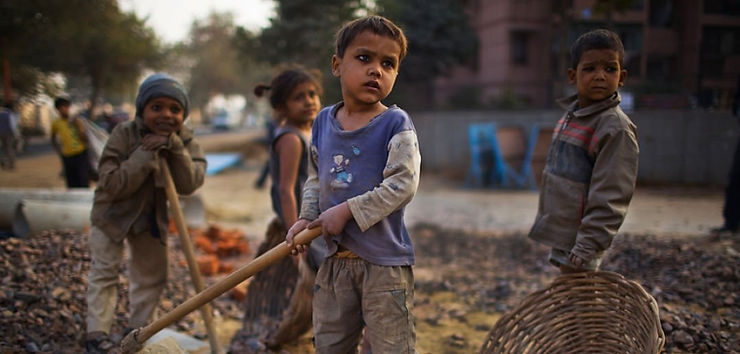By: Eric Weinberg
Child labor is a global issue that kills hundreds of thousands of kids every year. Child labor is complicated with lots of different forms. It occurs in many countries, with different causes and effects. Child labor is “any form of work performed by children.” Typically, this “work” is dangerous and includes little to no pay with awful conditions and hours. Sadly, worldwide, 1 in every 10 children work to support their families. About 72 million of these children work dangerous occupations, posing a severe threat to their health. These children work up to 16 hours a day. Usually, this involves abuse from adults. This occurs in a variety of industries including but not limited to agriculture, manufacturing, mining, domestic services, and illegal retail. Where did it all start? How bad is it?
In very early human history, hunters and gatherers needed many hands in order to feed their families and tribes. This included children. Children would pick berries, and boys would learn how to hunt. This custom continued through the development of non-nomadic civilizations where children would work in the house and do chores, and some higher-class children would get an education. This continued for some time, though more and more children got an education and less stayed at home. It seemed as though child labor was gone.
But in the 1800s, as the Industrial Revolution began, factories realized that to make the maximum profit, they would have to cut back on salaries. Most companies decided to take advantage of poor people living in the city. Most of these city dwellers had uneducated children. As the poor adults began to notice that factories were encouraging child workers, poor families sent their children off to earn some extra money. The old idea of child labor came back up. Children could be forced to working dangerous places, to be controlled easier, and most of all, are paid extremely small amounts. Now factories began to develop into hubs of child abuse and labor. This spread throughout Europe, America, and Asia. In less civilized countries, children were kidnapped and set to work in sweatshops for no pay, against their will. As this child labor increased, over decades literacy rates dropped, and more and more people worked low-paying jobs. Children who were engaged in child labor received no education at all and were forced out into the world without being able to read or write or do math, necessary skills to become successful.
Even before people notice this next uneducated generation people found out about child labor. Many people changed their views and revolted against child labor.
The fight against child labor was captured by the fictional story of Oliver Twist, published in 1839. This book by Charles Dickens gave a view into the life of an abused and working child. This opened up empathy for these children in the factories. Most financially stable people did not really know how bad child labor in factories actually was, and this book gave them a glimpse. Charles Dickens really put this into view, describing parts where Oliver had run out of the building for his own dear life because of the more porridge he had asked Master for. This changed the viewpoint of many, and between 1802-1878 laws were passed to improve pay, hours, and conditions for child workers. Finally, in 1938, the Fair Labor Standards Act was passed, making minimum wages for different kinds of jobs and erasing child labor in legal jobs in America. This does not mean there are not still child workers working illegal and under-the-radar jobs in America, and there are still plenty of child workers in third-world countries and less developed areas.
Today the number of child laborers has greatly decreased, though it remains one of the biggest problems in developing countries and poverty-ridden areas. The number of child workers will increase as the wars that take place in the middle east and East Europe destroy homes and cities, leaving families with nothing as they seek refuge in countries where their children may have to work in order to sustain the family. They currently are focused on Sub-Saharan Africa, which houses 21.4% of all child workers. Human Rights Watch says that about “100 million children still work today.” 98 million child workers engage in agriculture-type jobs which can sometimes have the toughest conditions. In the book “Lies,” by Michael Grant, a Thai character says that in Bangkok he had to “stay alert for sweatshop bosses who would kidnap you and put you to work in the fields 14 hours a day.” This example supports just how awful child labor is and why we have to put in the time, effort, and money to help these children. When we think of child labor, we might think of something that happened long ago, but it still happens today. It is awful that any child would have to have their education taken away by a form of modern slavery.











